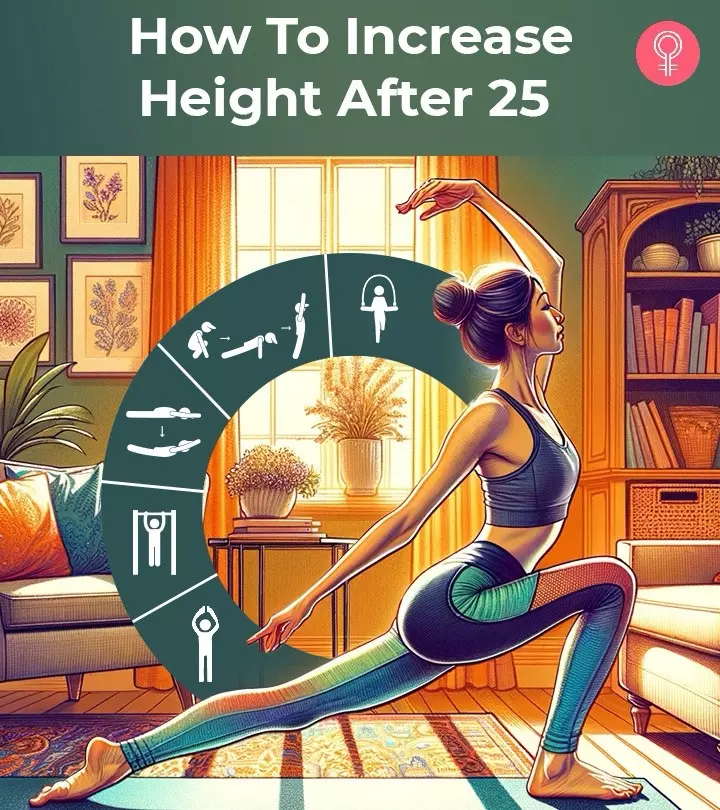4 Alternative Sleep Cycles That Can Add Extra Hours To Your Week

Image: Shutterstock
For most of us, the favorite part of the day is slipping into a fresh pair of pajamas and getting under clean sheets for undisturbed sleep. However, getting enough sleep every night is easier said than done, as we need to schedule our rest time according to our specific timetables. A singular sleep cycle never works for everyone, but the good news is, it doesn’t have to be that way either. In this article, we have mentioned a few alternative sleep cycles, following which can give you the few extra hours of sleep you deserve. Read on!
In This Article
1. Biphasic Sleep Cycle
Among the various sleep cycles, Biphasic sleep cycle is notably the easiest to follow. It provides a total sleep duration of approximately 6 to 6.5 hours per day, divided into two distinct segments.
One approach for this is to enjoy a 6-hour nighttime sleep accompanied by a brief 20-minute nap in the middle of the day. Or, you can opt for a 5-hour nighttime sleep and compensate with a more extended nap later, spanning 1 to 1.5 hours.
There are numerous advantages to this sleeping pattern. Experiencing midday drowsiness is quite common, and adopting a biphasic sleep routine enables you to incorporate a nap during that period. Napping can enhance your memory, elevate your mood, and promote heart health. This sleep schedule also grants you extra daytime hours to enhance your productivity.
However, research done on Biphasic sleep presents a mixed view on the advantages and disadvantages of this sleep pattern (1). The necessity for daytime napping might indicate an underlying sleep disorder. Therefore, it is crucial to seek guidance from a medical professional before making any adjustments to your sleep routine.
2. Uberman Cycle
The Uberman sleep cycle represents an extremely demanding sleeping pattern characterized by 6 brief 20-minute naps, interspersed with 3 hours and 40 minutes of wakefulness in between. This schedule is notably challenging to adapt to and can pose significant hurdles for those with full-time commitments. It also can hinder social interactions, given the necessity to adhere to a strict nap regimen.
On the positive side, the Uberman cycle offers ample free time, making it potentially more suitable for individuals with naturally lower sleep requirements. However, it’s crucial to note that the daily sleep allotment of 2 hours falls below the recommended minimum for adequate rest and may have long-term health implications.
3. Dymaxion Cycle
The Dymaxion sleep cycle bears a resemblance to the Uberman sleep cycle, as both allocate only 2 hours of sleep. However, in the Dymaxion cycle, these 2 hours are divided into 4 equal 30-minute naps, separated by wake periods totaling 5 hours and 30 minutes. These extended wake periods offer greater flexibility in your daily schedule, whether you need it for work commitments or maintaining social connections.
4. The Everyman Cycle
The Everyman cycle consists of five distinct variations. The first version closely mirrors the biphasic sleep pattern, involving 6 hours of nighttime rest followed by a 20-minute daytime nap.
In the second variation, one can sleep for 4.5 hours during the night and supplement it with two 20-minute daytime naps. This cycle may prove to be beneficial for people with flexible schedules, such as part-time workers or students, who can conveniently incorporate brief naps before, after, or between their commitments.
The third alternative involves a 3-hour nighttime sleep followed by three 20-minute daytime naps, totaling 4 hours of sleep.
The final two versions of this cycle are more extreme. One includes a 1.5-hour nap and four 20-minute naps, amounting to 2 hours and 50 minutes of sleep per day. The other features a 1.5-hour nap and five 20-minute naps, totaling 3 hours and 10 minutes of sleep daily.
How To Fall Asleep Faster
If you are someone who spends hours twisting and turning before getting some sleep, here is something you can do that will help you fall asleep quickly. This practice involves contracting various muscle groups within your body for a short duration before releasing the tension. Begin with gently tensing the muscles in your forehead for a duration of 5-15 seconds, followed by a relaxation period of 10-30 seconds. Continue this method by targeting different muscle clusters. Clench your jaw, and lift your shoulders toward your ears while tensing the muscles. Form fists with your hands engage your arm muscles and similarly contract the muscles in your buttocks, legs, and feet. Doing this can help alleviate tension and promote relaxation throughout your body.
Switching through alternative sleep cycles can reclaim valuable hours in your week. The key takeaway is that your sleep doesn’t have to be a one-size-fits-all formula. It’s important to remember that these alternative sleep cycles may not work for everyone, and consulting with a healthcare professional is always a wise step to make sure you get your perfect night’s sleep.




























